|
|

|
|
Author
|
Topic: SpaceLogistics Mission Extension Vehicle
|
Robert Pearlman
Editor Posts: 54418
From: Houston, TX
Registered: Nov 1999
|
 posted 02-26-2020 01:16 PM
posted 02-26-2020 01:16 PM
   
Northrop Grumman release Northrop Grumman Successfully Completes Historic First Docking of Mission Extension Vehicle with Intelsat 901 SatelliteCompanies demonstrate groundbreaking satellite life-extension service Northrop Grumman Corporation and the company's wholly-owned subsidiary, SpaceLogistics LLC, have successfully completed the first docking of the Mission Extension Vehicle-1 (MEV-1) to the Intelsat 901 (IS-901) spacecraft in order to provide life-extension services. This historic accomplishment marks the first time two commercial satellites have docked in orbit and the first time that mission extension services will be offered to a satellite in geosynchronous orbit. 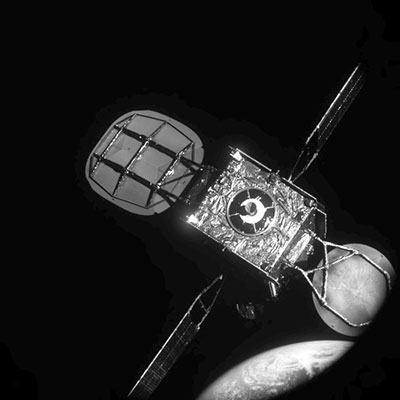 Above: View of IS-901 satellite from Mission Extension Vehicle-1's (MEV-1) "near hold" position during approach from approximately 20 meters with Earth in the background. The MEV successfully docked with the Intelsat 901 satellite on Tuesday, Feb. 25. MEV-1, launched Oct. 9, 2019, recently completed its orbit raising to an orbit approximately 180 miles above geosynchronous orbit. IS-901 is a fully operational communication satellite that is running low on fuel. Intelsat removed 901 from service in December 2019, transferring customers to other satellites in its extensive fleet, in order to raise its orbit to the same altitude as MEV-1 in preparation for docking. MEV-1 then completed the historic docking with IS-901 on February 25 at 2:15 a.m. ET. The combined spacecraft stack will now perform on-orbit checkouts before MEV-1 begins relocating the combined vehicle to return IS-901 into service in late March. "Our Mission Extension Vehicle provides an innovative, satellite life extension service," said Tom Wilson, president, SpaceLogistics LLC. "Together, Northrop Grumman, SpaceLogistics LLC and Intelsat have taken the first step in pioneering in-space logistics services for both commercial and government customers." "Intelsat has been at the forefront of innovation and game-changing space technology for decades. Pushing the boundaries of what's possible is in our DNA here – that's why we didn't hesitate to sign up to be MEV-1's first customer," said Mike DeMarco, executive vice president and chief services officer at Intelsat. "We're proud to make history with SpaceLogistics LLC and Northrop Grumman on this groundbreaking space milestone." 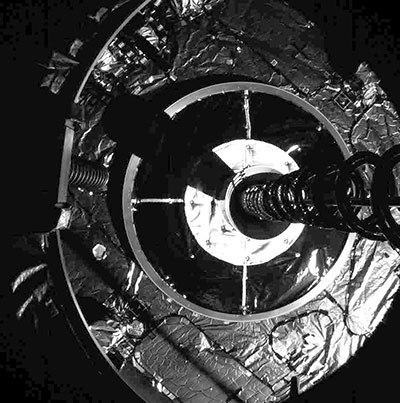 Above: MEV-1 captures IS-901 to initiate the final docking of the two spacecraft. Under the terms of the contract with Intelsat, MEV-1 will provide five years of life extension services to the IS-901 satellite before returning the spacecraft to a final decommissioning orbit. MEV-1 will then move on to provide mission extension services to a new client spacecraft. MEV-1 was designed and built at the Northrop Grumman's Dulles, Virginia, facility and utilizes a low-risk mechanical docking system that attaches to existing features on the client satellite. Once docked, MEV takes over the attitude and orbit maintenance of the combined vehicle stack to meet the pointing and station keeping requirements of the customer. MEV is designed for multiple docking and undockings and can deliver over 15 years of life extension services. The company is scheduled to launch its second Mission Extension Vehicle, MEV-2, later this year, which is contracted to provide service to a different Intelsat satellite. This life extension service is just the first step in an expansive technology development plan. The company's vision is to establish a fleet of satellite servicing vehicles that not only extend the life of satellites, but provide other services such as inclination changes and spacecraft inspections, as well as use advanced robotics technology to perform additional functions such as in-orbit repair and assembly. 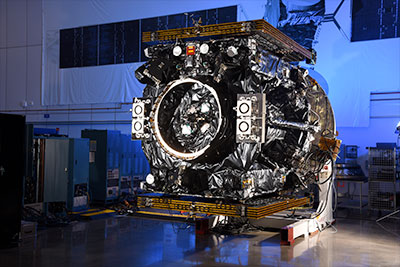 Above: Northrop Grumman's Mission Extension Vehicle-1 (MEV-1). As the foundational architects of satellite technology, Intelsat operates the world's largest and most advanced satellite fleet and connectivity infrastructure. We apply our unparalleled expertise and global scale to connect people, businesses and communities, no matter how difficult the challenge. Intelsat is uniquely positioned to help our customers turn possibilities into reality – transformation happens when businesses, governments and communities use Intelsat's next-generation global network and managed services to build their connected future. |
Robert Pearlman
Editor Posts: 54418
From: Houston, TX
Registered: Nov 1999
|
 posted 04-19-2020 09:55 AM
posted 04-19-2020 09:55 AM
   
Northrop Grumman Mission Extension Vehicle: Breathing Life Back Into In-Orbit SatellitesA satellite may be healthy and fully operational, but it can still be retired if its fuel supply has depleted. Once fuel runs dry, that's it: The satellite is done, unusable. Enter the Mission Extension Vehicle (MEV). On average, there are about 20 satellites each year that reach this condition and are retired. Since the number of potentially unusable satellites is so vast, Northrop Grumman is leading the way in developing satellite servicing plans and technology. MEV has solved this issue: It is a vehicle designed to dock with geostationary satellites whose fuel is nearly depleted. Once connected to its client satellite, MEV will use its own thrusters and fuel supply to extend the satellite's lifespan by performing station-keeping maneuvers. Then, when the customer no longer needs MEV's service, it will undock and move on to the next client satellite. "Our MEV is a multi-use vehicle," said Joe Anderson of Northrop Grumman's satellite servicing operations unit. "It has a 15-year design life, but there's much more than 15 years of life extension fuel in the vehicle. This will allow us to service satellites in inclined orbits too." A Space Rendezvous at 7,000 Miles per Hour MEV-1, launched on Oct. 9, 2019 is the first life-extension vehicle to market, under a contract with Intelsat, the world's largest commercial satellite operator. After launch, MEV-1 raised its orbit to rendezvous with its client satellite, Intelsat 901 (IS-901), in geosynchronous equatorial orbit (GEO), a process that took three and a half months from launch and used both its chemical and electric propulsion systems. MEV-1 traveled directly to graveyard orbit, also known as a disposal orbit, which is situated approximately 180 miles above GEO and more than 22,000 miles above Earth, as a precautionary measure. A few weeks after the MEV-1 launch, the IS-901 began to raise its own orbit from GEO to the graveyard, where the two vehicles rendezvoused and finally docked in late February 2020, moving at a rate of approximately 7,000 miles per hour while successfully aligning. Future MEV dockings will take place directly in GEO. Simple Yet Revolutionary In-Orbit Docking MEV-1's method for docking is simple. The vehicle takes advantage of a feature that approximately 80% of GEO satellites share: a liquid apogee engine (LAE). GEO satellites use the LAE to finalize their orbits at the start of their life but are never used again. Fortunately, only a few manufacturers worldwide build LAEs, and all use very similar designs. The Mission Extension Vehicle uses a patented mechanism to capture and dock with a client's LAE. This mechanism is inserted into the cone of the LAE to capture the client satellite —with an approach termed "cone-to-capture," the same approach to docking utilized as far back as the Gemini program in the 1960s. Once captured, the mechanism retracts and the MEV's stanchions make firm contact with the client vehicle's launch adapter ring ensuring a secure docking. The launch adapter ring is another feature common to most GEO satellites. It's important to note that the MEV-client vehicle connection is purely mechanical, thus avoiding the complications of fluid transfers and electrical or data connections. Returning the Satellite to GEO On April 2, 2020, MEV-1 returned IS-901 to service in its designated location in GEO where it will remain for five years — the length of Northrop Grumman's contract with Intelsat. At the end of this contract, MEV-1 will return IS-901 back to graveyard orbit and release it there to be decommissioned. MEV-1 will then move on to provide mission extension services to new client spacecraft, repeating the process once again and breathing new life into satellites in need. |
Robert Pearlman
Editor Posts: 54418
From: Houston, TX
Registered: Nov 1999
|
 posted 04-12-2021 03:37 PM
posted 04-12-2021 03:37 PM
   
Northrop Grumman release Northrop Grumman and Intelsat Make History with Docking of Second Mission Extension Vehicle to Extend Life of SatelliteSuccessful docking paves the way for future on-orbit and life-extension services through robotics Northrop Grumman Corporation and the company's wholly-owned subsidiary, SpaceLogistics LLC, have successfully completed the docking of the Mission Extension Vehicle-2 (MEV-2) to the Intelsat 10-02 (IS-10-02) commercial communications satellite to deliver life-extension services. The docking was completed at 1:34 p.m. EST. 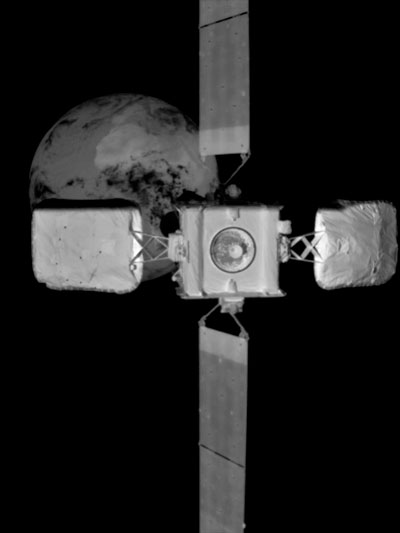 Above: An image of Intelsat 10-02 taken by MEV-2's infrared wide field of view camera at 15m away. Northrop Grumman is the only provider of flight-proven life extension services for satellites, and this is the second time the company has docked two commercial spacecraft in orbit. The company's MEV-1 made history when it successfully docked to the Intelsat 901 (IS-901) satellite in February 2020. Unlike MEV-1, which docked above the GEO orbit before moving IS-901 back into service, MEV-2 docked with IS-10-02 directly in its operational GEO orbital location. "Today's successful docking of our second Mission Extension Vehicle further demonstrates the reliability, safety and utility of in-space logistics," said Tom Wilson, vice president, strategic space systems, Northrop Grumman and president, SpaceLogistics LLC. "The success of this mission paves the way for our second generation of servicing satellites and robotics, offering flexibility and resiliency for both commercial and government satellite operators, which can enable entirely new classes of missions." Under the terms of Intelsat's satellite life-extension servicing contract, MEV-2 will provide five years of service to IS-10-02 before undocking and moving on to provide services for a new mission. "Intelsat has pioneered innovations in space-based technology for more than five decades. We are proud to work side by side with Northrop Grumman on today's groundbreaking mission, the first-ever docking of a communications satellite in GEO orbit," said Intelsat Chief Services Officer Mike DeMarco. "Space servicing is a valuable tool for Intelsat in extending the high-quality service experience that our customers depend upon. Northrop Grumman's MEV technology has helped us extend the life of two otherwise healthy and high-performing satellites, while focusing our innovation capital on advancing the Intelsat next-generation network – this technology is a 'win-win' for us." The Mission Extension Vehicle is the first in Northrop Grumman's lineup of satellite servicing vehicles, but following last year's robotic servicing mission award from DARPA, the company is working with the agency on a mission that will feature the first-ever commercial robotic servicing spacecraft. This mission will expand the market for satellite servicing of both commercial and government client satellites with advanced robotics using the company's Mission Robotic Vehicle (MRV) to conduct in-orbit repair, augmentation, assembly, detailed inspection and relocation of client satellites through robotics. To further complement its on-orbit servicing portfolio, Northrop Grumman is leveraging model based systems engineering to develop its Mission Extension Pods (MEPs) which will also provide critical life extension services to aging satellites. The MRV will be used to install these pods on existing in-orbit commercial and government client satellites to extend their mission lives. The company is targeting 2024 for launch of both the MRV and the initial MEPs. |
Robert Pearlman
Editor Posts: 54418
From: Houston, TX
Registered: Nov 1999
|
 posted 04-09-2025 09:46 AM
posted 04-09-2025 09:46 AM
   
Norhrop Grumman Northrop Grumman Achieves First-Ever Undocking Between Two Commercial Spacecraft in Geosynchronous OrbitA Mission Extension Vehicle (MEV) developed by Northrop Grumman Corporation's Space Logistics LLC has successfully undocked with Intelsat's IS-901 satellite, completing its life extension service. This marks the first undocking between two commercial spacecraft in the geosynchronous earth orbit (GEO) graveyard. - MEV-1 has provided five years of life-extension services to IS-901, allowing Intelsat to operate this space-based asset beyond its design life.
- In 2020, MEV-1 successfully proved docking with IS-901 was possible in the GEO graveyard orbit and brought IS-901 back into operation in GEO.
- Now that life-extension services are complete, MEV-1 released the IS-901 satellite back into the GEO graveyard and is relocating to the next servicing mission.
- Northrop Grumman's Space Logistics has provided reliable service to the satellite operator for MEV-1's entire mission. MEV-2 will remain docked to Intelsat 10-02, providing life-extension for an additional four years – nearly doubling service from the original extension contract.
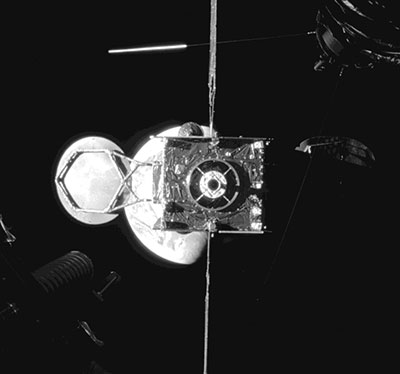 Above: MEV-1, developed by Northrop Grumman's Space Logistics, successfully undocked with Intelsat's IS-901 satellite. (Northrop Grumman) Expert: Rob Hauge, president, Space Logistics: "The first-of-its kind technology that extended a satellite's life is paving the way for an entire infrastructure of future on-orbit satellite servicing missions for a variety of customers. We are continuing to invest in next-generation capabilities to deliver the most technologically advanced servicing capabilities to support and maintain new and existing space-based assets." Details: Northrop Grumman is currently the only proven provider of life-extension services for satellites in GEO – redefining the boundaries of resiliency, flexibility and capabilities across government, commercial and national security customers. MEV-1 performed the first-ever in-orbit commercial spacecraft docking with IS-901 in the graveyard orbit before reducing the satellite's inclination and bringing it back into operation in GEO in 2020. Since the technology was successfully proven in graveyard orbit with MEV-1, MEV-2 docked with Intelsat's IS-10-02 directly in GEO in 2021, with no reported disruption in service during the docking. Northrop Grumman's Space Logistics provides in-orbit satellite servicing to GEO satellite operators using its MEVs, which dock with customers' existing satellites to provide propulsion and attitude control needed to extend satellite service lives. Starting next year, Space Logistics next-generation systems will be able to provide expanded satellite services including on-orbit repairs, upgrades, refueling, debris removal, assembly and manufacturing. |
Headshot
Member Posts: 1397
From: Vancouver, WA, USA
Registered: Feb 2012
|
 posted 04-09-2025 10:13 AM
posted 04-09-2025 10:13 AM
   
Is there a reason why such a vehicle could not be built to extend the Hubble telescope's life? |
Jim Behling
Member Posts: 1974
From: Cape Canaveral, FL
Registered: Mar 2010
|
 posted 04-13-2025 01:03 PM
posted 04-13-2025 01:03 PM
   
Hydrazine exhaust products and it still doesn't address the gyro failures. | |
Contact Us | The Source for Space History & Artifacts
Copyright 1999-2025 collectSPACE. All rights reserved.

Ultimate Bulletin Board 5.47a
|
|

|
 advertisement advertisement

|
















